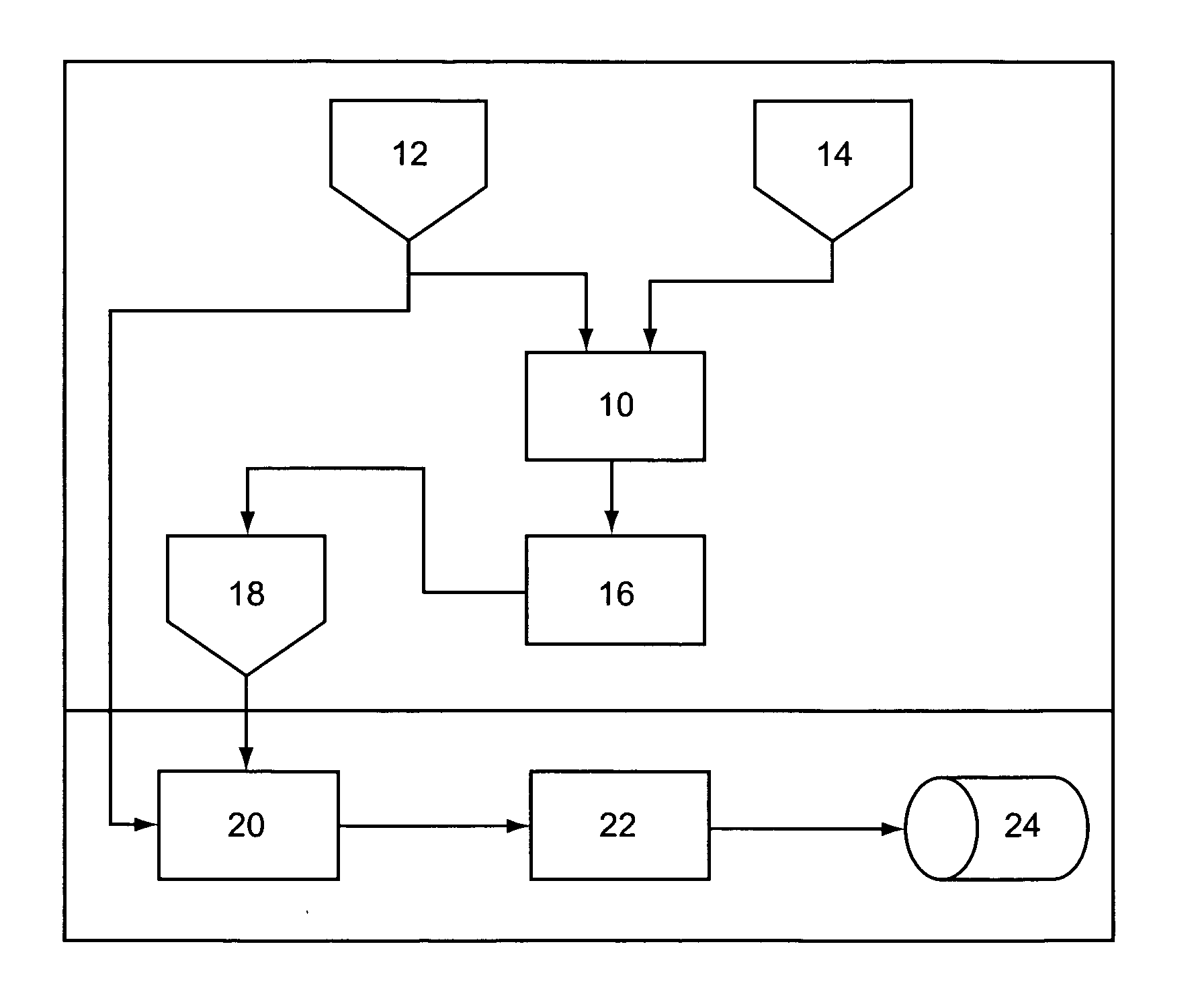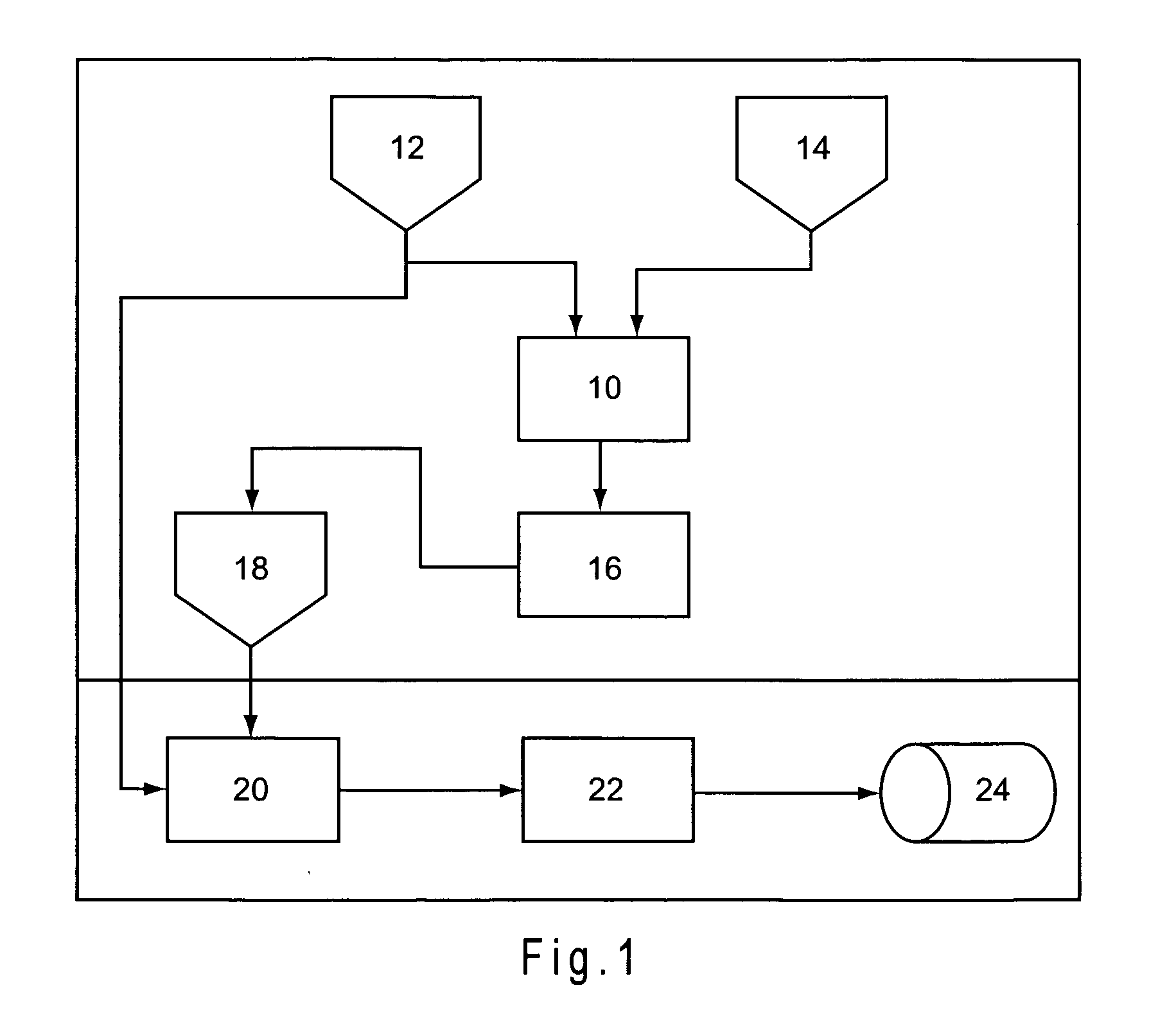Process for introducing an additive into a polymer melt
a polymer melt and additive technology, applied in the direction of synthetic resin layered products, packaging, textiles and paper, etc., can solve the problems of undesirable presence of poorly wetted particle agglomeration, poor dispersion of additives,
- Summary
- Abstract
- Description
- Claims
- Application Information
AI Technical Summary
Problems solved by technology
Method used
Image
Examples
example 1
[0097] A 40% solids sodium nitrite solution was prepared by dissolving 8 kg of Repauno Products NaNO2 (between 99.5%-99.7% pure and including about 0.05% sodium carbonate and 0.2% sodium nitrate) (obtained from Hydrite Chemical Company, Brookfield, Wis.) in 12 kg of water. The solution was made with tap water at room temperature by gently agitating the water / nitrite mixture.
[0098] Dow ATTANE® 4201-G VLDPE (obtained from Dow Chemical Company, Midland, Mich.) was loaded into the hopper of a gravimetric dosing unit that was positioned to feed the polymer into the main feed port of an APV Extrusion Systems MP 2050 50 mm corotating twin screw extruder. The feeder was configured to dose the ATTANE at a rate of 41 kg / h. The mixing elements of the twin screw extruder were arranged in a fashion that allowed for feeding and melting of the VLDPE, injection and mixing of the water / nitrite solution, removal of the water, pressurization of a die and formation of continuous strands of a homogeneo...
examples 2-5
[0102] Dow AFFINITY PL 1850 polyolefin plastomer (density=0.902 g / cm3; melt index=3 dg / min) was dry blended with the masterbatch pellets produced in Example 1 by tumble mixing to yield net sodium nitrite contents of 0.1%, 0.2%, 0.5%, and 1.0% by weight. Films were prepared from the plastomer / masterbatch pellet blends using a laboratory-scale cast film extrusion line. The extruded films were about 8 inches wide and 2.25 mils thick and exhibited excellent gloss and transparency. Each film was laminated to an oxygen barrier layer-containing film of the following composition: PETG / tie / nylon 6 / EVOH / nylon 6 / tie / VLDPE. The PETG was a copolymer of terephthalic acid, ethylene glycol and cyclohexane dimethanol. EVOH provided a high barrier to oxygen. The sodium nitrite-containing cast films were joined to the VLDPE surface of the oxygen barrier film via thermal lamination where heat and pressure was used to fuse the adjacent layers. The laminated films were fabricated into open pouches such t...
PUM
| Property | Measurement | Unit |
|---|---|---|
| temperature | aaaaa | aaaaa |
| temperature | aaaaa | aaaaa |
| wt. % | aaaaa | aaaaa |
Abstract
Description
Claims
Application Information
 Login to View More
Login to View More - R&D
- Intellectual Property
- Life Sciences
- Materials
- Tech Scout
- Unparalleled Data Quality
- Higher Quality Content
- 60% Fewer Hallucinations
Browse by: Latest US Patents, China's latest patents, Technical Efficacy Thesaurus, Application Domain, Technology Topic, Popular Technical Reports.
© 2025 PatSnap. All rights reserved.Legal|Privacy policy|Modern Slavery Act Transparency Statement|Sitemap|About US| Contact US: help@patsnap.com



